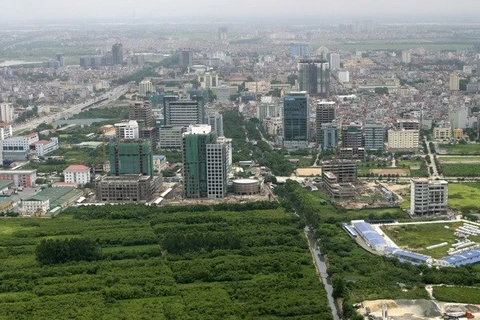Hanoi (VNA) - The Ministry of Transport has hired French safety consultants to oversee the final stages of Hanoi's first metro project, the Cat Linh-Ha Dong urban elevated railway.
The move is to ensure the final safety procedures are completed smoothly and allow the project to start operating soon after years of setbacks.
Regular checks have been conducted by relevant agencies, including the State Council for Pre-Acceptance Test for Construction Works and the Ministry of Natural Resources and Environment.
The ministry will strengthen supervision to ensure the highest safety before the project goes live.
According to China’s Engineering, Procurement, Construction (EPC) contractor, delays were due to problems regarding the completion of documents for inspection. These problems are caused by different regulations between the two countries.
At the question-and-answer session before the 14th National Assembly meeting on June 5, transport minister Nguyen Van The said: “We are looking forward to putting the project into operation. But this is the first urban railway project, it directly concerns the lives of many people so safety must be the highest priority. Commercial runs of the project will begin right after consultants certified the safety of the project.”
The 13.5km-long railway line, from Cat Linh in Ba Dinh district to the suburban district of Ha Dong, has 12 stations, including Cat Linh, La Thanh, Thai Ha, Lang, Thuong Dinh, Ring Road 3, Phung Khoang, Van Quan, Ha Dong, La Khe, Van Khe and Yen Nghia.
The track is designed for speeds up to 80km per hour and the average speed of operation is 35km per hour. Trains would run every 3 – 5 minutes.
The project cost approximately 886 million USD, of which two-thirds were loans from China.
Construction officially began in 2011 and was initially planned to be completed in 2014, until several delays dragged the project to a yet unknown date of completion.
The elevated railway has been running on trial since September 2018.
The People's Committee of Hanoi has also announced the lowest one-way ticket price for the railway line is 8,000 VND (35 US cents); daily ticket is 30,000 VND (1.3 USD) and monthly ticket is 200,000 VND (8.6 USD).
The proposed prices will apply during the pilot period and would then be adjusted. However, the duration of the pilot period has not been confirmed.
Although it is still unclear when it will open, local officials are already preparing to integrate it into Hanoi’s public transport system.
The municipal Department of Transport plans to increase the number of bus routes connected with Cat Linh-Ha Dong railway line from 43 to 50, with 65 bus stops along the route.
With this adjustment to the bus network, the department said the amount of passengers on the route from Yen Nghia Bus Station-Nga Tu So area will increase by three or four times compared to the current figure.
The bus system which connects with the Cat Linh-Ha Dong railway route will be able to serve 313,000-344,000 passengers daily. Once the line opens, the number of taxis operating along its route is expected to decrease due to people taking buses to use the railway, cutting traffic congestion.
The railway is also hoped to shorten travel time on the route by half and cut overcrowding on buses, according to the department.
Meanwhile, local authorities have announced a plan to charge vehicles in downtown areas to increase the use of public transport, according to a decision signed by Chairman of the municipal People's Committee Nguyen Duc Chung recently.
Motorbikes would also be banned from inner-city districts by 2030, the paper said.
These were some of the solutions put forward to develop the public transport network so as to reduce the percentage of individual vehicles by 20-25 percent by next year, thus increasing the use of public transport and bicycles./.
VNA
























